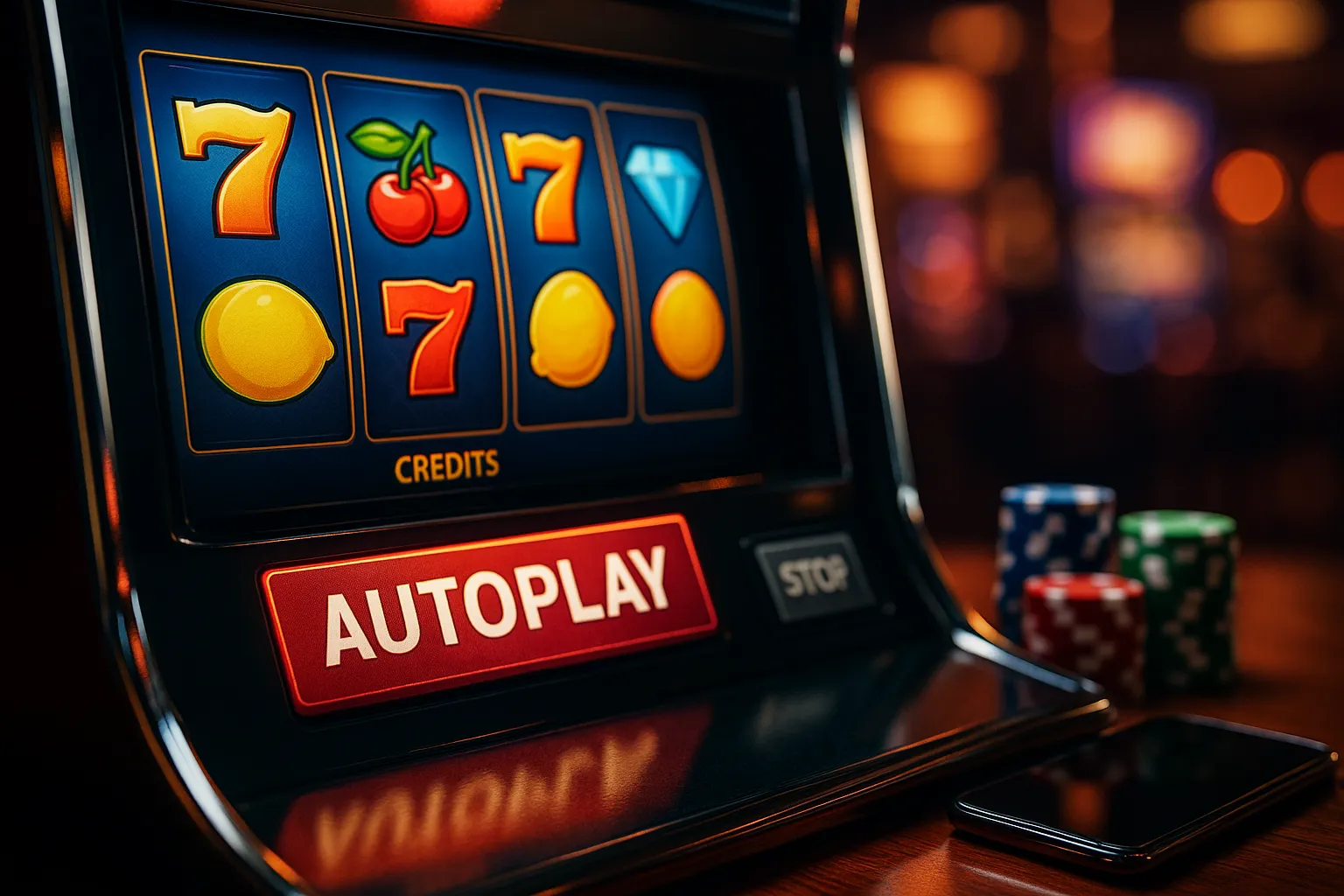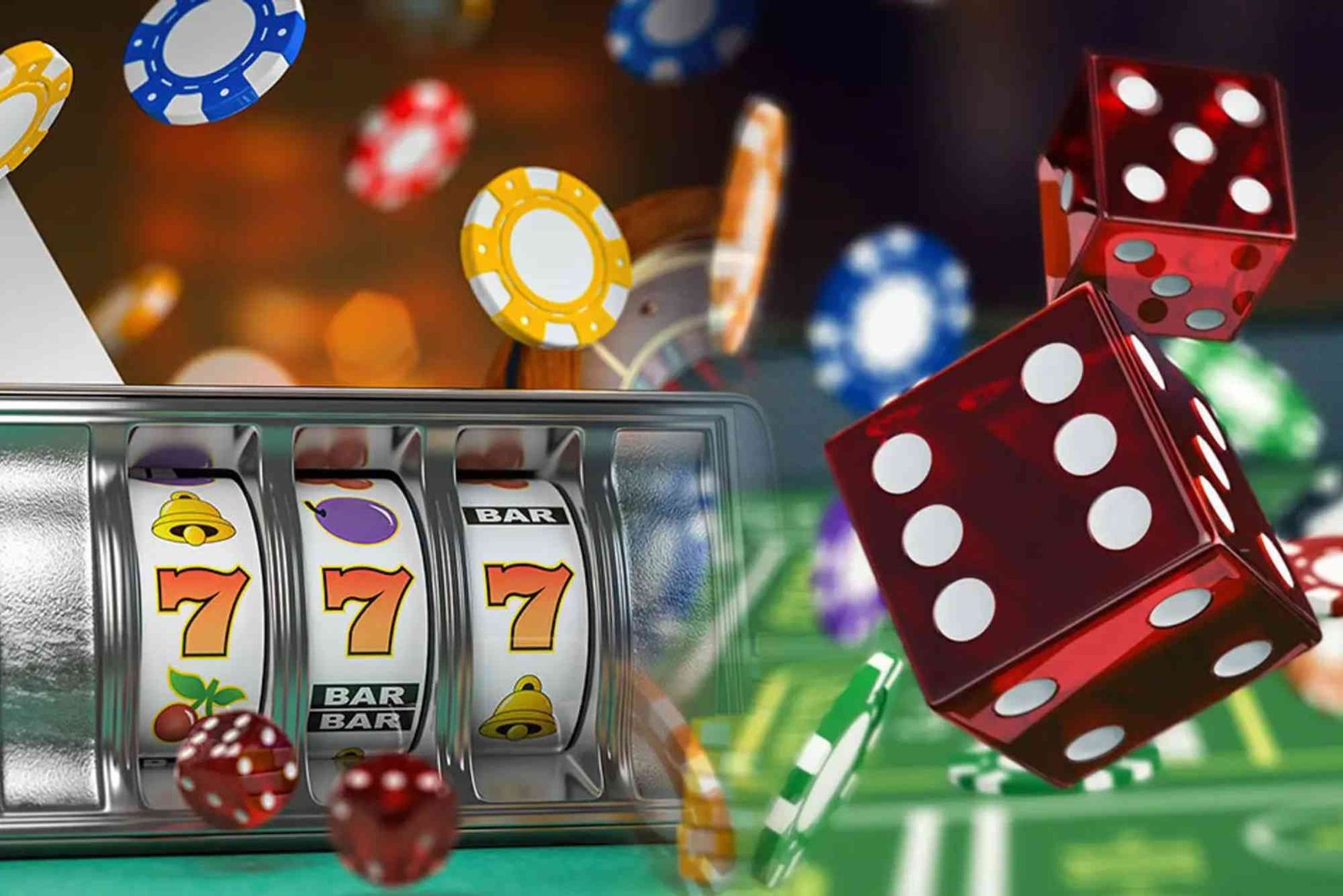Autoplay is like that friend who offers to “handle it for you” and then quietly racks up your tab. I’ve used it on everything from low-volatility fruit slots to brutal high-variance Megaways titles, and I’ve watched it munch through balances when I wasn’t paying attention. But I’ve also used it strategically—letting 50 spins run while I track RTP in a spreadsheet or sip coffee during a bonus hunt. So, is autoplay a bankroll assassin or simply a time-saver? The truth lives in how and why you use it.
What Autoplay Really Does (and Doesn’t) Do
Autoplay doesn’t change the math. Your RTP, hit frequency, and volatility curves are exactly the same as if you clicked spin manually. What it does change is the pace and awareness of spending. Because you’re not physically pressing the button each time, your brain loses that tiny friction point that asks, “One more?” Instead, it becomes “One more batch.” If you set 100 spins at £0.50, that’s £50 committed—mentally pre-spent—before the first reel moves.
I learned this the hard way on a sleepy Sunday. I set 200 spins at £0.40, wandered off to answer emails, and came back to a balance that had quietly fallen off a cliff. No bad behavior by the slot—just my inattention. Autoplay didn’t steal my bankroll; my lack of presence did.
Convenience vs. Control: The Real Trade-Off
For players who track data, autoplay is brilliant. It standardizes spin intervals, helps you note bonus frequency, and frees your hands to take notes or multitask. But convenience can mask risk. The faster cycles (especially on turbo modes) mean you experience more variance in less time. That’s thrilling if you’re properly bankrolled; it’s lethal if you’re not.
Here’s where many of us run into trouble: we intend to watch, but life interrupts. A phone call, a knock at the door, a quick scroll through social—suddenly 40 spins have vanished. On platforms outside the UKGC’s tight restrictions, such as betting sites with fast withdrawal uk, autoplay settings can be more generous—longer spin batches, fewer forced breaks. That freedom is nice, but it demands you install your own brakes. Fast withdrawals are great, but fast losses are easier too when the spin button is automated.
Why the UK (Mostly) Banned Autoplay and What That Means
UK regulators clipped autoplay because of evidence that removing manual friction increased risk of harm. They also forced spin timers and disabled quick-spin to slow the burn rate. That doesn’t mean autoplay is inherently evil; it means that at scale, a lot of players struggled to self-regulate. If you’re playing offshore or on older software that still offers autoplay, you’re stepping outside that safety net. Replicate the guardrails yourself: hard stop-losses, session timers, and alarms on your phone.
The Psychology of “Set and Forget”
Autoplay minimizes the micro-decisions that keep you consciously engaged. Without those, you slip into what psychologists call “dissociative play”—that trance where reels spin and time evaporates. You’re not making choices; you’re watching. That’s fine if entertainment is all you’re after and you’ve pre-capped the cost. It’s dangerous if you equate watching with “it’s not really spending.” Money moves whether you’re staring or not.
I often ask myself before I click autoplay: What’s my goal for this batch? Am I grinding a bonus hunt? Testing volatility? Or just too tired to click? If it’s the last one, I usually skip autoplay and either play manually or call it a night. Fatigue + automation = careless sessions.
Using Autoplay Like a Pro (Instead of a Passenger)
Think of autoplay as cruise control: great on a straight highway, risky on sharp turns. Use it when you have:
-
A clearly defined spin count and budget. Pre-calc worst-case loss for that batch.
-
Stop conditions. Some slots let you stop on any win above X, or when your balance rises/falls by a set amount. Use those.
-
A tracking purpose. If you’re logging spins to understand a slot’s behavior, autoplay makes sense.
And when you can’t set conditions in the UI, improvise: set a timer on your phone. If it rings and you’re down 30%, stop. Don’t start another batch out of frustration.
The Hidden Cost of Turbo Modes
Turbo or quick spins stack with autoplay to turn your bankroll into confetti. I’ve seen 100 turbo spins complete in under three minutes. That acceleration hides variance inside time rather than money. It feels like less happened because you lived it quicker, but your balance shows the truth. If you insist on turbo, reduce batch sizes and raise your monitoring frequency. In other words, check your dashboard every 20 spins, not 100.
Bonus Hunting: Where Autoplay Can Shine
Bonus hunts (especially in streaming communities) rely on autoplay to collect features efficiently. You set a loss cap per game, spin until bonus, note it, move on. This is a structured, intentional use. The problem comes when casual players mimic hunts without discipline. They eat through balances chasing bonuses because “the streamer did it.” Streamers are often sponsored or bankroll-backed. Your wallet isn’t.
Emotional Bankroll and the Danger of Detachment
Autoplay decouples emotion from action. When you hit “Start,” you feel a little excitement. Spin 87? You’re numb. Numb players don’t celebrate small wins, don’t notice creeping losses, and don’t quit in time. If you find yourself zoning out, switch to manual spins or take a break. Gambling should engage you, not anesthetize you.
Money Management: Autoplay Rules I Live By
I treat every autoplay batch like a mini-session:
-
Define stake × spins = total risk. I never start a batch I couldn’t happily lose in full.
-
Set a profit skim. If I’m up 30–40% mid-batch, I might cancel and bank it. No rule says you must finish.
-
Use alarms, not intentions. “I’ll check in five minutes” becomes twenty. A timer won’t forget.
-
Document big swings. If a slot slams me three sessions in a row on autoplay, I reevaluate whether it’s a good candidate for automation.
These are personal heuristics, but they’re built off pain. Make your own after a few honest post-mortems of lost sessions.
Autoplay in Table Games and Sports Bets
Autoplay-esque features creep into other verticals too. Some roulette interfaces let you repeat bets automatically; some sportsbooks let you auto-accept better odds or re-bet favorite markets. The same logic applies: convenience cuts friction, friction slows losses. If you find yourself auto-repeating wagers without re-checking form, injuries, or odds shifts, you’re handing edge to the house.
Tech Tips: Tools That Help You Stay Present
-
Session trackers (apps or simple spreadsheets) make loss/profit trends obvious, breaking the trance.
-
Bankroll wallets: Keep gambling funds separate from spending accounts. Fewer taps to top up = fewer impulsive rebuys.
-
Screen time or focus apps: Ironically, the same tools that fight social media addiction can fight gambling autopilot. Lock your phone for 20 minutes and just watch the game, or lock the casino app and force yourself to cool off.
When Autoplay Is Actually Great
There are times I swear by it: testing a new slot’s feel, clearing a tedious wagering requirement when I’ve already decided to burn the bonus, running small-stake spins while I read up on the game’s bonus table. Used intentionally, it saves time and mental energy. I still keep it on a short leash.
Final Verdict: Killer or Convenience?
Autoplay is neither hero nor villain—it’s a tool. In the hands of a mindful player, it’s efficient and sometimes necessary. In the hands of a distracted or emotional player, it’s a bankroll blender. The key is designing your own brakes: caps, timers, reasons. If you can do that, autoplay turns into a convenience feature. If you can’t, it becomes a silent siphon on your balance.




